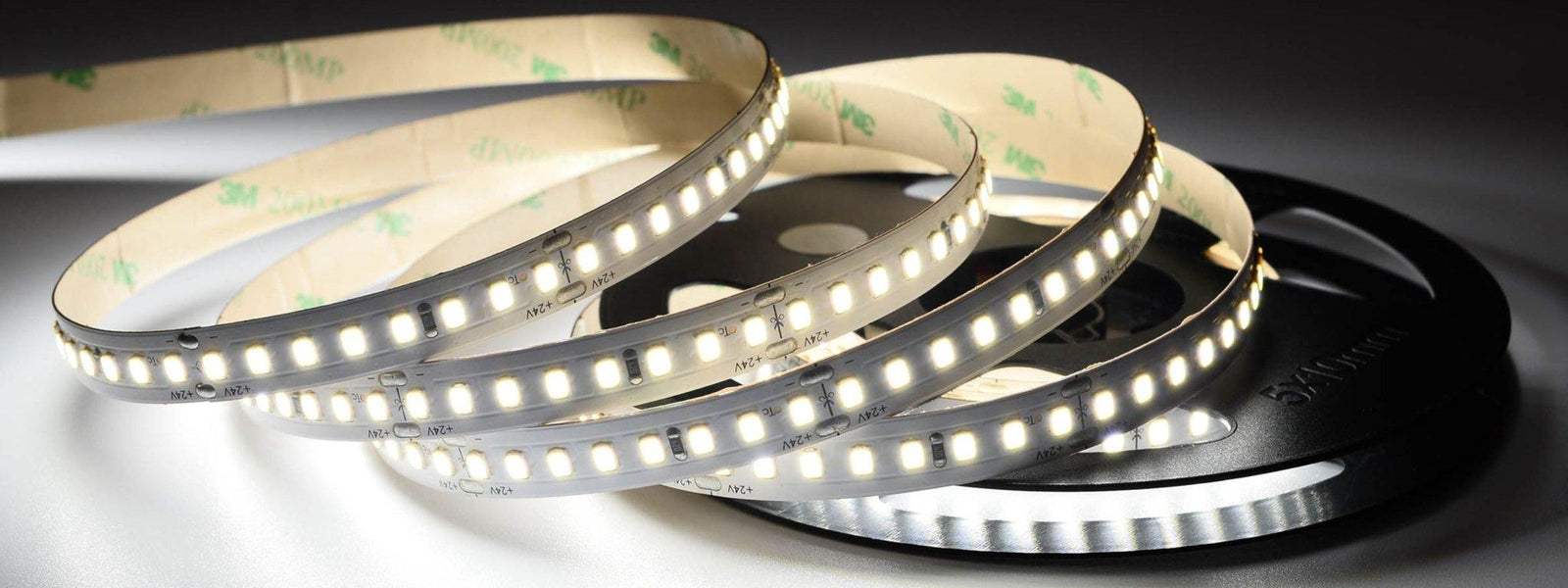1. Installing LED strip lights is relatively straightforward. Here are the basic steps:
- Plan the layout: Measure the area where you want to install the lights and plan the placement.
- Clean the surface: Ensure the surface is clean and dry for the adhesive to stick properly.
- Cut the strip if needed: LED strips can be cut at designated points (usually marked on the strip) to fit your space.
- Peel and stick: Most LED strips come with adhesive backing. Peel the protective layer and stick the strip onto the surface.
- Connect to a power source: Plug the LED strip into a power adapter and connect it to an electrical outlet. Make sure the power supply matches the voltage and wattage requirements of the strip.
- Test the lights: Turn the lights on to check if they are functioning properly.
- Optional: Use connectors, controllers, or smart hubs for additional customization.
2. Can LED strip lights be cut?
- Yes, LED strip lights can be cut to fit a specific length. The strips have designated cutting points, usually marked with a scissors icon or a line. These cutting points are located between circuits, so cutting elsewhere could damage the strip. After cutting, you may need to use connectors or solder new connections to make the strip functional again.
3. How to connect multiple LED strip lights together?
- Connecting multiple LED strip lights can be done in a few ways:
- Using connectors: There are clip-on or snap-in connectors that can join strips without soldering.
- Soldering: For a more secure connection, solder wires to the copper pads at the ends of the strips.
- Parallel connection: For longer runs, it is better to connect multiple strips to the power source in parallel to prevent voltage drop.
- Using amplifiers or repeaters: If extending the lights over long distances, amplifiers can help maintain consistent brightness.
4. What power supply do I need for LED strip lights?
- The power supply needs to match the voltage (usually 12V or 24V) and wattage requirements of the LED strip. To find the right wattage:
- Calculate the total wattage: Multiply the wattage per meter by the total length of the strip.
- Add a 20-30% buffer: This ensures the power supply is not running at full capacity all the time, which extends its lifespan.
- For example, if you have 5 meters of an LED strip that uses 4 watts per meter, the total requirement would be 20 watts. Adding a 30% buffer, the power supply should be at least 26 watts.
5. Are LED strip lights waterproof?
- Not all LED strip lights are waterproof. LED strips come in different IP ratings (Ingress Protection):
- IP20: Not waterproof, suitable for indoor use only.
- IP65: Water-resistant, suitable for areas like kitchens or bathrooms.
- IP67: IP67 Waterproof, suitable for outdoor use or areas with direct exposure to water.
- IP68: Fully waterproof be used underwater up to 3 metre.
6. How to dim LED strip lights?
- Dimming LED strip lights can be achieved through several methods:
- Remote dimmers: Many LED strips come with remote-controlled dimmers.
- Wall dimmer switches: For hardwired installations, use a compatible low-voltage LED dimmer switch.
- Smart controllers: Use smart lighting systems like Zigbee, Z-Wave, or Wi-Fi controllers to dim the lights via a smartphone app or voice control.
7. How long do LED strip lights last?
- LED strip lights typically last between 30,000 to 50,000 hours, depending on the quality and usage conditions. Factors such as ambient temperature, power supply quality, and how often the lights are turned on/off can affect their lifespan.
8. Can LED strip lights damage walls or paint?
- The adhesive backing on LED strip lights may cause minor damage when removed, especially on painted surfaces. To minimize damage:
- Use removable adhesive tapes or clips.
- Heat the adhesive with a hair dryer before peeling it off to soften the glue.
- Clean any residual adhesive with a mild solvent like rubbing alcohol.
9. How to sync LED strip lights with music or sound?
- To sync LED strip lights with music, you can use:
- Sound-activated controllers: These controllers have built-in microphones that respond to music or ambient sound.
- Apps or smart devices: Some smart LED strips can sync with music apps like Spotify.
- Music-syncing hubs: Some systems come with a dedicated hub that processes the audio signal and controls the lighting accordingly.
10. How to change the color of LED strip lights?
-
For RGB or RGBW LED strip lights, colors can be changed using:
-
A remote control that comes with the strip.
-
A smartphone app if the strip has a Wi-Fi or Bluetooth controller.
-
Smart home systems such as Alexa or Google Assistant, which allow voice commands for color changes.
-
-
Make sure to choose LED strips that support multiple colors if you want to change the color.
These answers cover the essential aspects of LED strip lights, addressing common concerns and providing practical solutions for users. If you have any specific questions then please email us at sales@ukledlights.co.uk

